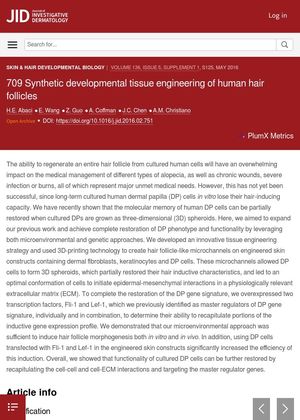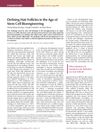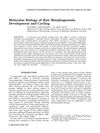Synthetic Developmental Tissue Engineering of Human Hair Follicles
April 2016
in “
Journal of Investigative Dermatology
”

TLDR Scientists have found a way to grow hair follicles from human cells in a lab, which could help treat hair loss and skin damage.
In 2016, researchers developed a novel tissue engineering strategy to regenerate hair follicles from cultured human cells, a breakthrough that could significantly impact the treatment of various types of alopecia, chronic wounds, severe infections, and burns. The study found that the hair-inducing capacity of long-term cultured human dermal papilla (DP) cells, which typically diminishes in vitro, could be partially restored when these cells were grown as three-dimensional (3D) spheroids. The team used 3D-printing technology to create hair follicle-like microchannels on engineered skin constructs, which allowed DP cells to form 3D spheroids and initiate epidermal-mesenchymal interactions in a physiologically relevant extracellular matrix. To fully restore the DP gene signature, they overexpressed two transcription factors, Fli-1 and Lef-1. The study demonstrated that this approach could induce hair follicle morphogenesis both in vitro and in vivo, and the efficiency of this induction was significantly increased when DP cells transfected with Fli-1 and Lef-1 were used in the engineered skin constructs.



